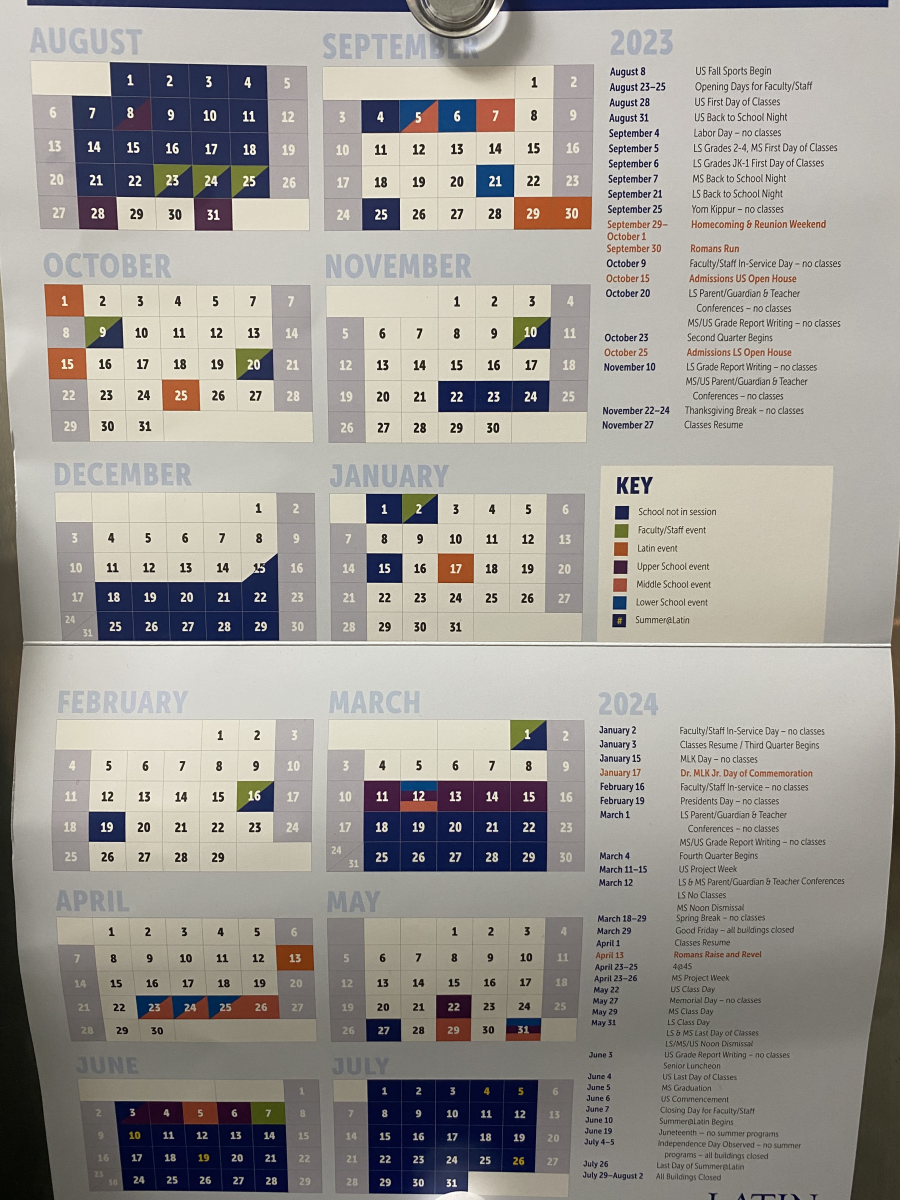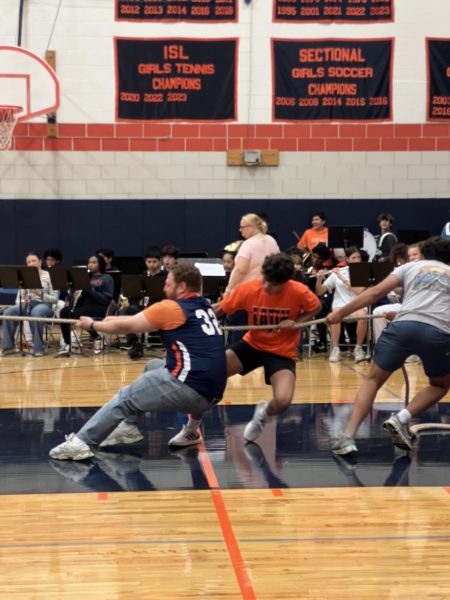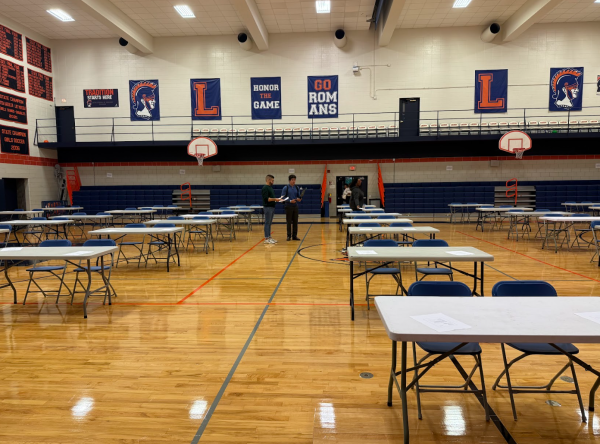Sprint to Break: Students and Teachers Navigate a Shorter First Semester
Latin’s 2023-2024 year at a glance calendar.
Winter break started at a record early date of December 15 this year, lasting right up until two days after New Year’s.
While the first semester was only 71 days (including the three exam days in December), the second semester will be 87 days (it would have been 88 without the January 12 Snow Day), meaning the first semester was two eight-day cycles and over three weeks shorter than the second. First semester unfolded in the blink of an eye this year, and students and teachers were caught in a whirlwind of short semester classes leading up to a very early winter break.
“The academic calendar is chosen almost a couple of years ahead of time,” Upper School Director Nick Baer said. “The first semester is always a little bit shorter just because of the nature of the calendar.”
Since the school year calendar is shared with faculty up to three years ahead, it is relatively simple for the administration and teachers to plan out classes. “We’re strategic about what will be a fall semester class and what will be a spring semester class,” Mr. Baer said. “Teachers always want more teaching time, but they are also strategic in planning their curriculum since we know the calendar so far in advance.”
Despite this planning period, some teachers face different benefits and challenges than others. Upper School science teacher Jonathan Legendre teaches Organic Chemistry as an elective during both semesters. This year marks the first time Organic Chemistry has been taught as a course with standards-based assessment (SBA), rather than a pass-fail Independent Study Program (ISP).
One of the main learning objectives for Mr. Legendre’s class is synthesis, which assesses on creating certain products given the reactants or starting materials. “There’s a finite library of the types of reactions we do in class,” Mr. Legendre said. “In the longer spring semester, we will increase the size of that library. With SBA, there can be more opportunities to show proficiency with a skill within the shorter first semester.” In other words, he can still assess how students can communicate reactions, even if they saw seven types of reactions rather than 11.
Because of how SBA works with the different semester lengths, Mr. Legendre says he feels confident in his approach. “Although some could say it’s unfair that second-semester students are going to be exposed to more examples than first-semester students, this is how I’m handling it and I feel good about it,” he said.
There is, however, an obvious benefit for second-semester students. “In the second semester, I feel the freedom to take a tangent or spend more time on an idea if students are really struggling with it,” Mr. Legendre said. “If the semester lengths were reversed, I wouldn’t have felt that freedom.”
In addition to his own efforts, Mr. Legendre saw his students “helping each other and diving into the new concepts.” So, when he was home sick in mid-January, he was confident the students could stay on track with the agenda even without him.
Junior Zoe Cartwright, who took Organic Chemistry first semester, was disappointed by the consequences of the different semester lengths. “I wish [Organic Chemistry] was longer because I really wanted to learn more about it,” Zoe said. “Honestly, I lost track of how many weeks were left of the first semester, so I don’t think I did the best I could have in that class.”
Reflecting on silver linings in addition to the time constraint, Zoe said, “If you plan your schedule right, I think having a shorter semester is beneficial.” For example, she suggested “[planning] classes strategically so you have harder electives for a shorter period.”
Freshman Keelyn Smey, who took Fashion Design, was also unaffected by having less class time in the first. “I didn’t have too much trouble completing my work in time,” Keelyn said. “I found that keeping a planner to record my assignments was incredibly helpful.”
Although the short semester did not impact classes, Keelyn was disappointed with the timing of winter break. “Because my break was different from my family who don’t go to Latin, I got to spend less time with them, which was kind of upsetting.”
However, the challenges of a wide gap in the lengths of the two semesters won’t be something to worry about next year, as winter break will fall in a satisfying range from December 21, 2024, until January 6, 2025. And no matter when winter break takes place, it will be two weeks.
Students and teachers experienced both challenges and advantages in a significantly shorter first semester. Zoe said, “Having one semester being longer than the other can be a benefit and a curse.”

Edie Park (’27) is delighted to return as a News Editor in her third year writing for The Forum. Edie hopes to present a diverse array of perspectives...





















































Mr. Joyce • Feb 1, 2024 at 3:01 pm
Some solid and clear writing here, Edie! I’m glad you joined The Forum. Good job with the sentence-length variation, too.